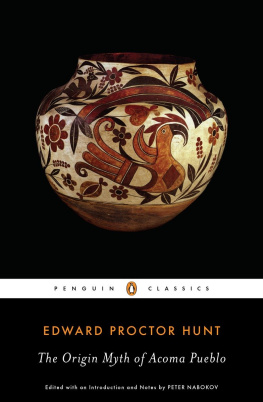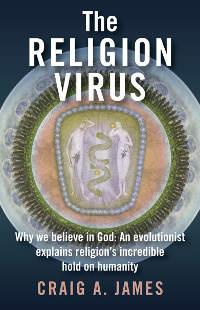Crawford Dorothy H. - Virus Hunt: The search for the origin of HIV
Here you can read online Crawford Dorothy H. - Virus Hunt: The search for the origin of HIV full text of the book (entire story) in english for free. Download pdf and epub, get meaning, cover and reviews about this ebook. year: 2013, publisher: Oxford University Press USA - OSO, genre: Romance novel. Description of the work, (preface) as well as reviews are available. Best literature library LitArk.com created for fans of good reading and offers a wide selection of genres:
Romance novel
Science fiction
Adventure
Detective
Science
History
Home and family
Prose
Art
Politics
Computer
Non-fiction
Religion
Business
Children
Humor
Choose a favorite category and find really read worthwhile books. Enjoy immersion in the world of imagination, feel the emotions of the characters or learn something new for yourself, make an fascinating discovery.

- Book:Virus Hunt: The search for the origin of HIV
- Author:
- Publisher:Oxford University Press USA - OSO
- Genre:
- Year:2013
- Rating:5 / 5
- Favourites:Add to favourites
- Your mark:
- 100
- 1
- 2
- 3
- 4
- 5
Virus Hunt: The search for the origin of HIV: summary, description and annotation
We offer to read an annotation, description, summary or preface (depends on what the author of the book "Virus Hunt: The search for the origin of HIV" wrote himself). If you haven't found the necessary information about the book — write in the comments, we will try to find it.
Virus Hunt: The search for the origin of HIV — read online for free the complete book (whole text) full work
Below is the text of the book, divided by pages. System saving the place of the last page read, allows you to conveniently read the book "Virus Hunt: The search for the origin of HIV" online for free, without having to search again every time where you left off. Put a bookmark, and you can go to the page where you finished reading at any time.
Font size:
Interval:
Bookmark:
VIRUS HUNT
the search for the origin of HIV
DOROTHY H. CRAWFORD


Great Clarendon Street, Oxford, OX 2 6 DP ,
United Kingdom
Oxford University Press is a department of the University of Oxford.
It furthers the Universitys objective of excellence in research, scholarship,
and education by publishing worldwide. Oxford is a registered trade mark of
Oxford University Press in the UK and in certain other countries
Dorothy H. Crawford 2013
The moral rights of the author have been asserted
First Edition published in 2013
Impression: 1
All rights reserved. No part of this publication may be reproduced, stored in
a retrieval system, or transmitted, in any form or by any means, without the
prior permission in writing of Oxford University Press, or as expressly permitted
by law, by licence or under terms agreed with the appropriate reprographics
rights organization. Enquiries concerning reproduction outside the scope of the
above should be sent to the Rights Department, Oxford University Press, at the
address above
You must not circulate this work in any other form
and you must impose this same condition on any acquirer
British Library Cataloguing in Publication Data
Data available
Library of Congress Cataloging in Publication Data
Data available
ISBN 9780199641147
Printed in Great Britain by
Clays Ltd, St Ives plc
Many books have been written about AIDS and the suffering of the people, families, communities, and countries affected by it. Today these issues remain as important as ever, but this book has rather a different theme. In Virus Hunt we go behind the scenes to reveal the work of the international teams of scientists that have painstakingly uncovered the origin of the viruses that cause AIDS.
The idea behind the book is to tell the story of scientific discoveries over several decades that have eventually revealed the true history of the AIDS pandemic. So this is not about what happened after the first cases were described in the early 1980s but rather about events that occurred around one hundred years earlier that silently laid the foundations for the massive pandemic we are experiencing today.
AIDS hit the headlines in 1981 when it was first recognized in the US. Very rapidly similar epidemics were reported in several other countries. Human immunodeficiency virus, or HIV, the causative virus, was discovered within two years, but its exact origins were hotly debated for the next thirty years.
Virus Hunt recounts the scientific trail that eventually solved the mystery of the origin of HIV. Cracking it required a wide range of experts from laboratory scientists to epidemiologists, animal ecologists, and evolutionary biologists, all working together as a team. The journey has been a long and complicated one, fraught with wrong turnings and false trails. At times progress was halted by lack of available tools and had to wait for further technological advances before it could take the next logical step. Along the way many previously unknown viruses have been discovered, not least twelve new HIVs that are presently spreading among us.
As a virologist I watched from the sidelines as the HIV story unfolded and found it frankly riveting. As each new piece of the puzzle fell into place we got closer to finding out just when, where, how, and why HIV first infected us and then spread like wildfire, until a logical picture finally emerged. Only then did the history of HIV from the original infection of a single person to the present total of over 60 million infections make any kind of sense.
Virus Hunt takes us on a journey from the US where AIDS was first identified to Africa to uncover its origins. We then travel back in time, following HIV from its discovery in France to the rainforests of west central Africa to search for its closest living relatives. Finally, we follow its global journey from rural west central Africa to local urban centres, and then on to the Caribbean. From here it jumped to the US where the discovery of AIDS closes the circle.
I am not claiming that this story is now complete or that it will not change in the future, because there remain holes to be filled in, and, of course, further discoveries may alter our views. But still it is a wonderful story of scientific endeavour which in my opinion is well worth the telling.
If a man will begin with certainties, he shall end in doubts, but if he will be content to begin with doubts he shall end in certainties (Sir Frances Bacon, 15611626).
I would like to thank the following experts for their comments and advice on the manuscript of this book :
Cristian Apetrei, Tulane National Primate Research Center, USA; Kevin De Cock, Center for Global Health, Center for Disease Control and Prevention, US; Joo Dinis de Sousa, Katholieke Universiteit Leuven, Belgium; Beatrice Hahn, University of Pennsylvania, US; John Iliffe, University of Cambridge, UK; Phillippe Lemey, Katholieke Universiteit Leuven, Belgium; Martine Peeters, University of Montpellier, France; Peter Piot, London School of Hygiene and Tropical Medicine, UK; Andrew Rambaut, University of Edinburgh, UK; Marco Salemi, University of Florida, US; Robin Weiss, University College London, UK; Mike Worobey, University of Arizona, USA.
I am grateful for the constant support provided by Latha Menon and Emma Marchant at Oxford University Press and also thank the following for reading and commenting on the draft manuscript: William Alexander, Jeanne Bell, Richard Boyd, Rod Dalitz, Frances Fowler, Ingo Johannessen, Barbara Judge, Jane Mitchell, and J Alero Thomas.
I am particularly indebted to John Mokili, San Diego State University, California, USA, for organizing my fact-finding trip to the Democratic Republic of Congo and also to Paul Sharp, University of Edinburgh, whose fascinating research seminars first inspired me to write this book. Paul has also given generously of his time with support and advice during the writing of the book and has provided the evolutionary trees.
The research undertaken for this book was supported by a grant from the Wellcome Trust.
Frontispiece Maps of Africa in 1955 and present
Sexual contacts among homosexual men with AIDS in cities in the US in the early 1980s |
Primate evolutionary tree |
Evolutionary tree showing lentiviruses HIV-1 and visna in relation to the other retrovirus genera |
Retrovirus evolutionary tree showing Visna, HIV-1, HIV-2 and SIVs |
Map of West Africa showing the range of the sooty mangabey monkey |
Evolutionary tree showing HIV-2 groups and SIVsmm isolates |
Evolutionary tree of HIV-1 showing the evolutionary relationships between nonrecombinant HIV-1 group M subtypes (starburst diagram) |
Map showing the location of the HIV-1 group M subtypes |
Evolutionary tree showing the realtionship between the first four SIVcpz isolates and HIV-1 groups M, N, O |
Map showing the natural ranges of the four chimpanzee subspecies |
Map showing the location of the field sites used to study SIVs from wild chimpanzees |
Evolutionary tree showing the SIVcpz isolates from field sites LB, MB, and EK |
Font size:
Interval:
Bookmark:
Similar books «Virus Hunt: The search for the origin of HIV»
Look at similar books to Virus Hunt: The search for the origin of HIV. We have selected literature similar in name and meaning in the hope of providing readers with more options to find new, interesting, not yet read works.
Discussion, reviews of the book Virus Hunt: The search for the origin of HIV and just readers' own opinions. Leave your comments, write what you think about the work, its meaning or the main characters. Specify what exactly you liked and what you didn't like, and why you think so.










